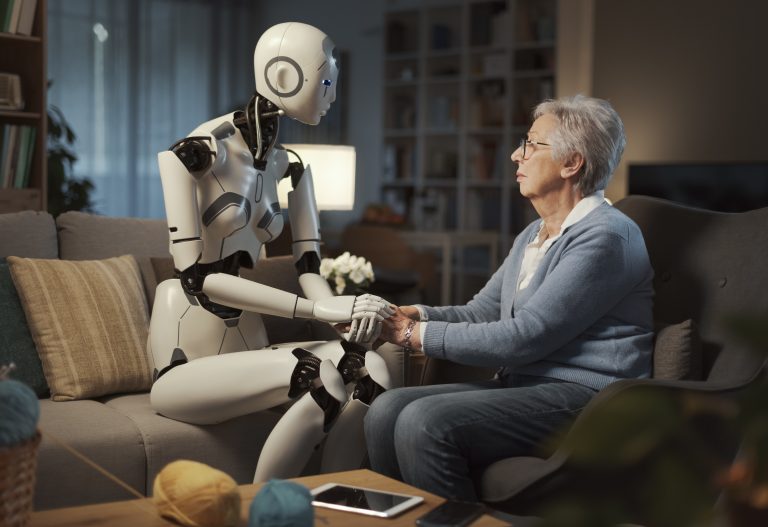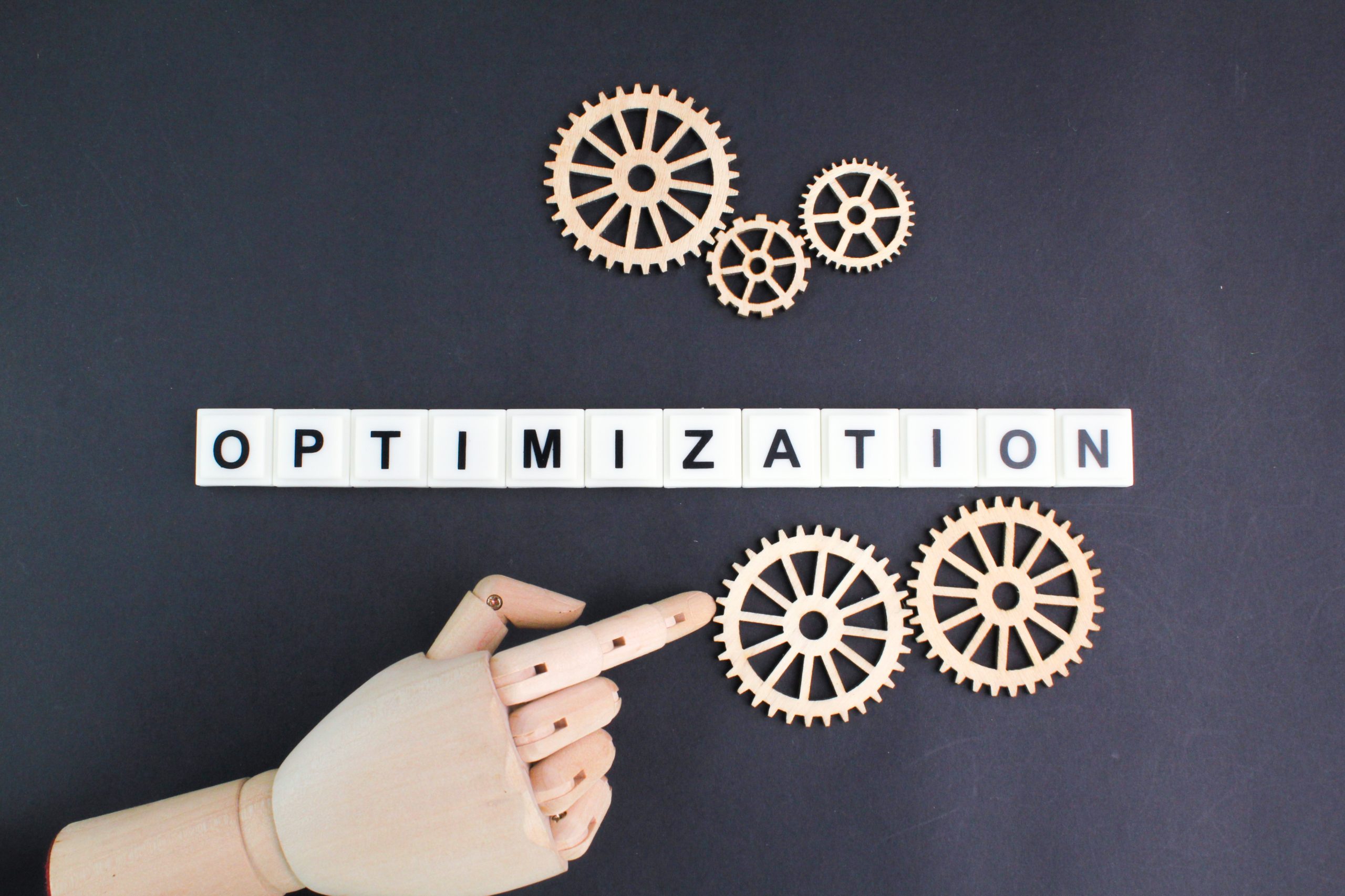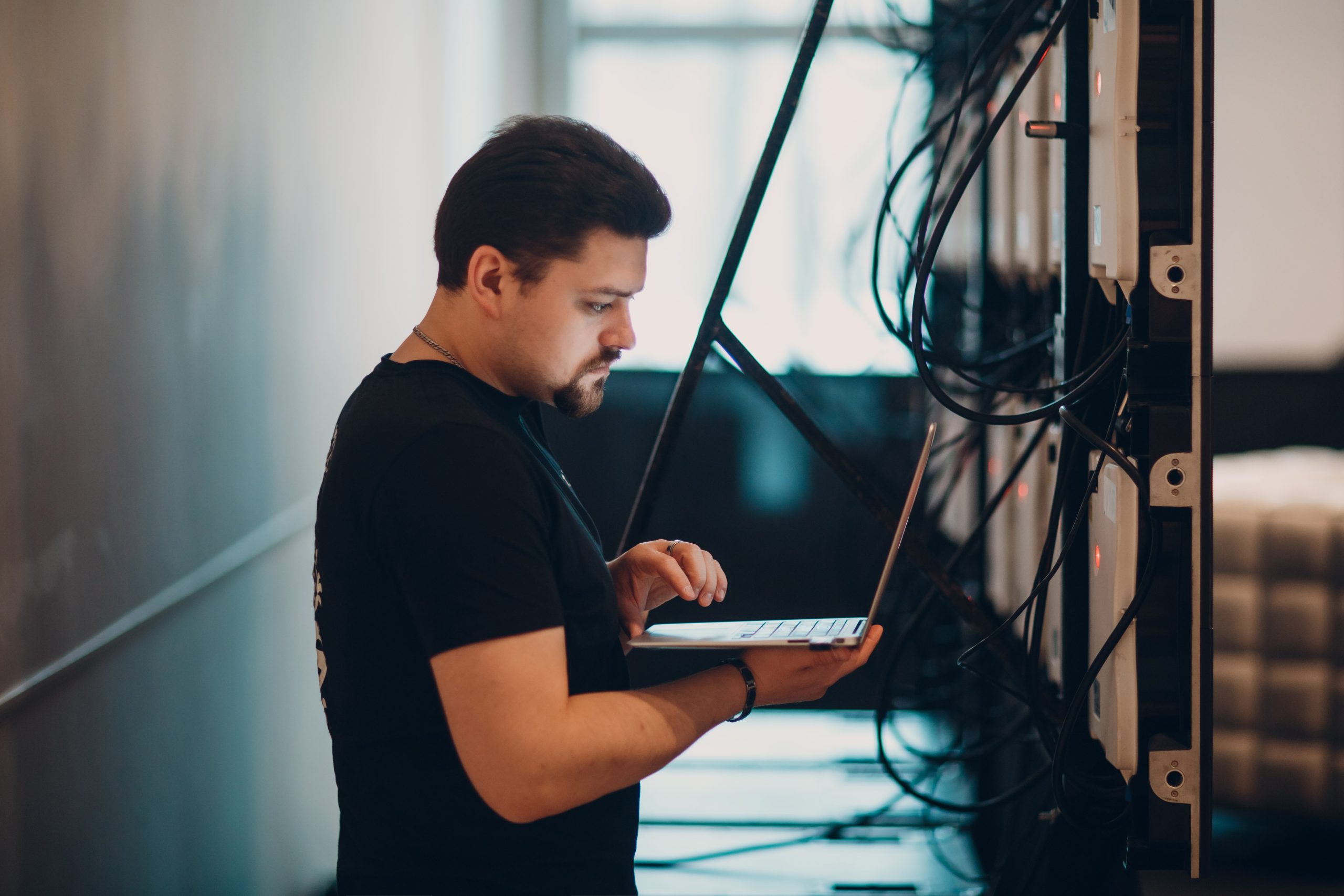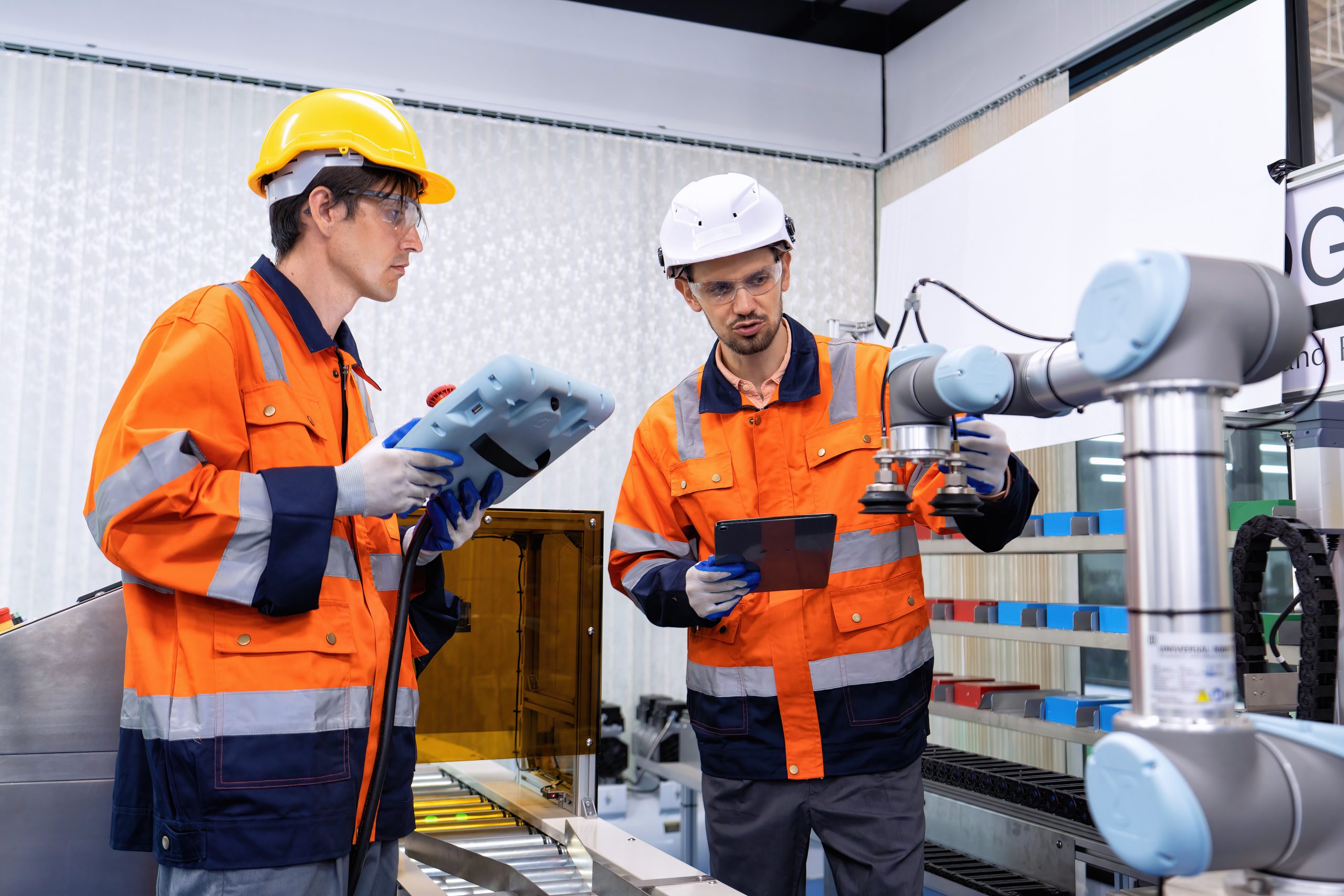Published on: May 23, 2023
The Robot Revolution: The Top Four Applications Of Artificial Intelligence In Robotics
Author: Daniel Coombes

Prior to the 21st century, intelligent robots were confined to the pages and scenes of science fiction. From the ruthless, robotic assassins in The Terminator franchise to the xenophobic and emotionless Daleks in Doctor Who, robots in popular media are often depicted as harbingers of civilization’s downfall.
However, in a modern light, this precedent seems unjust. The combination of robotics and artificial intelligence has revolutionized countless industries for the better. Come with us as we take a look at this fascinating subset of artificial intelligence, and discover how robotic systems are being deployed to benefit four different sectors.
Top four applications of artificial intelligence in robotics
The scope of the implications of combining robotic technology with artificial intelligence is truly breathtaking; take a look at our top four use cases for this remarkable technology.
1. Space exploration
Space is known as the final frontier; we have currently found 9,432 planets, 3,200 solar systems, and 100 billion galaxies. Yet, despite our incredibly powerful telescopes, advanced rockets, and far-reaching satellites, we have only explored 4% of the entire universe.

However, with advancements in AI technologies, the secrets held outside the known universe are being unraveled. Here is an overview of the ten most important AI robots in space exploration.
- A-PUFFER: This incredible two-wheeled robot is able to inflate and flatten to investigate hard-to-reach locations on distant planets.
- BRUIE: Scientists believe that this buoyant robot could traverse the underside of ice flows to search for life in the oceans of distant moons.
- Vyommitra: Also known as ‘Space Friend’, is a humanoid robot that will board an uncrewed mission to examine the effects of radiation and weightlessness on astronauts. This incredible technology can emulate human behavior and accomplish specific tasks such as providing air pressure warnings, utilizing handle switch panels, and using environmental control and life support systems.

- Athlete: Athlete, which stands for All-Terrain Hex-Legged Extra-Terrestrial Explorer, is a robot created by NASA that is able to navigate the difficult terrain on the Moon, Mars, and other celestial bodies to transport and deliver payloads.
- Mars Perseverance: Using computer vision to navigate the complex landscape of Mars, this incredible tech can drill into the surface to take soil and rock samples.
- Ingenuity Mars Helicopter: This automated micro-helicopter will be the first vehicle to fly on another planet and will be able to scout the terrain for 90-second intervals before needing to recharge at a solar panel.

- CIMON: Airbus has created an autonomous robotic ‘floating head’ called CIMON that works similarly to virtual assistants found on Earth, such as Alexa or Siri. It is able to use natural language processing (NLP) to understand and answer questions from astronauts.
- Restore-L: These artificial intelligence robots act as intergalactic mechanics who can attend to the needs of satellites and improve their sustainability using sophisticated algorithms, processors, tools, and robotic arms.
- Marsbee: A swarm of robotic bees will deliver a topographic view of Mars by utilizing a combination of sensors and machine learning.
- Robonauts: These dexterous humanoid robots are allocated the most dangerous and repetitive tasks to help maintain the International Space Station.

2. Autonomous vehicles
In 1982, the world was introduced to KITT, an automated vehicle that fought crime in the iconic TV show Knight Rider.
In 2023, self-driving cars that need little to no human intervention are an undeniable reality. In fact, there are an estimated 30 million driverless cars around the world.

There are currently five different levels of vehicle automation which can be seen in the table below.
| Level | Description |
| 1 | The human driver must perform all operational tasks; however, artificial intelligence can aid steering and acceleration. |
| 2 | The AI system can help with some functions, but the driver is in charge of most critical functions. |
| 3 | Artificial intelligence takes over most tasks, but drivers must intervene during unforeseen circumstances. |
| 4 | This type of vehicle is able to safely drive an entire journey; however, it is only made possible when traffic conditions are optimal. |
| 5 | These are fully automated vehicles that need no human intervention. |
These autonomous robots use countless datasets collected from sensors around the vehicle to create a
Here are some of the different types of sensors used within autonomous vehicles:
- Radar: Automated vehicles broadcast a radio frequency that bounces off nearby objects to a sensor.
- Camera: Cameras collect image data which is then interpreted by sophisticated algorithms and processors.
- LiDAR: Also known as Light Detection and Ranging, sends out laser beams that are then collected by a photodetector.
- Sonar: These sensors emit an acoustic pulse that reaches the surrounding area and returns ‘echoes’ back to a transducer.
- GPS: Uses satellites to provide artificial intelligence with the current position of the vehicle and the layout of the surrounding area.

3. Robotic surgery
The role of artificial intelligence and robotics within the healthcare industry is truly limitless. Advancements in computer science have enabled robots to perform complex tasks and improve decision-making within this sector.
Shockingly, it is estimated that 4.2 million patients die every year from surgical complications within thirty days of their operation. However, by using a combination of robotics and artificial intelligence, the healthcare industry hopes to reduce this horrific figure drastically.

The implementation of both data science and artificial intelligence can improve pre-operative tasks. These algorithms analyze mass amounts of datasets, including imaging, patient information, former diagnoses, and laboratory results, to identify the best course of action and potential complications.
Artificial intelligence enables physicians to perform touchless surgery. Some examples of this remarkable technology include:
- FAce MOUSe: This robot interface monitors the facial expressions of the surgeon to control a fiber-optic laparoscope inside the pelvis or abdomen.
- Maastricht University: An artificial intelligence robot performed microsurgery by suturing blood vessels as small as 0.03 mm. The robot mimics a clinician’s hands but minimizes the unsteadiness of the inputted movements.
- Hair restoration: Utilizing powerful algorithms, robots are able to both collect and graft hair follicles into precise areas of the scalp.
- Da Vinci: This type of robot has already performed an estimated 8.5 million procedures, including the removal of prostates, cysts, kidneys, uteruses, and gallbladders. In this surgery, robotic arms that are controlled by the leading physician manipulate tools and instruments to perform incisions.
- Gestonurse: This automated robotic nurse is able to handle surgical tools for consultants, which minimizes the chance of human error.

4. Humanoid robots
In the 2023 horror film M3GAN, an inventor creates an artificial intelligence humanoid companion for her orphaned niece with horrific consequences.

While this may seem like far-fetched science fiction, these incredibly personable, intelligent, and reactive humanoids already exist today. Say hello to Engineered Art’s Ameca, the world’s most advanced humanoid robot.

Sharing distinct visual similarities to the NS-5s in the 2004 film I, Robot, this incredible machine combines deep learning, natural language processing, and computer vision with breathtaking results.
Some of Ameca’s capabilities are:
- Hearing: Microphones enable artificial intelligence to ‘hear’ using a blend of natural language processing and machine learning to understand human speech.
- Conversational: NLP and deep learning algorithms combine to allow Ameca to have in-depth and natural conversations with humans.
- Cameras: These devices enable the robot to ‘see’ and identify both objects and faces.
- Expression: Her extremely flexible rubber skin enables her to have unbelievably expressive facial movements.
- Emotions: Through the use of deep learning neural networks, Ameca is able to mimic and display human emotion.
- Modular: Engineered Art has designed Ameca to be modular, meaning that she can constantly be improved upon.

Check out the programmers of Ameca having a full-blown conversation with this incredible artificial intelligence technology below.
While Ameca is undeniably impressive, she is limited by her inability to walk, which restricts her usability in real-world scenarios. However, current advancements in robotics mean that humanoid robots could be used to do the following tasks in the near future:
- Companion robots: A recent study suggests that more than one-third of all adults over 45 feel alone. These sophisticated machines will be able to provide both emotional and physical assistance to the elderly and disabled.
- Housework: Robots will be able to do the dull and repetitive tasks that burden every homeowner, such as sweeping, mowing the lawn, washing the windows, and changing the bedding.
- Social simulation: Artificial intelligence could be used to train employees on how to deal with scenarios; for instance, a robot could simulate a depressed patient for therapists.
- Recruitment: Shockingly, 48% of managers confessed that their own beliefs and biases affect their hiring process. This often means that the ‘best candidate’ is often overlooked for someone that is more likeable or relatable. A robot developed by Furhat Robotics called Tengai is able to conduct without bias and treats all candidates the same.
- Autism: Statistics show that 50% of individuals with autism have a form of social anxiety that makes education difficult. However, studies have found that children with autism are less intimidated and more engaged with robots resembling human beings.
- Travel: Robots could soon be the ultimate travel advisor offering a friendly face at train stations and airports to passengers who need help.
- Teaching: 80% of educators believe that burnout is a real concern in their profession due to staff shortages, immense workloads, and strict deadlines. Employing robots as teaching assistants who can educate, monitor, and converse with students could lessen some of these burdens.
- Stuntronics: Disney has been developing robotic stunt doubles for their theme park’s live shows. These dynamic, flexible, and expendable robots can achieve feats that would be implausible for a human actor to achieve safely.
- Search and rescue: Soon, humanoid robots could be used in situations that are deemed too dangerous for emergency teams. Italian researchers have created Walk-man, a robot equipped with immense strength, an arsenal of sensors, microphones, and a lightweight design enhanced with numerous actuators that enable it to tackle even the most difficult environment.
- Industrial robots: Humanoid robots could revolutionize the assembly line by taking over dangerous and repetitive tasks that are counterproductive to manufacturing.
Robot revolution
As the artificial intelligence and robotic fields continue to innovate, we can expect to see even more unimaginable applications of this revolutionary technology. From education to the military, there is truly no sector within society that could not be benefitted from the use of AI robots.
Could this mean the end of the human workforce? We doubt it. While these technologies are unbelievably impressive, in their current form, they pale in comparison to human capabilities.
For more information about the latest trends and innovations in artificial intelligence and robotics, check out our cutting-edge blog filled with articles about the industry.

Daniel Coombes
Daniel is a talented writer from the UK, specializing in the world of technology and mobile applications. With a keen eye for detail and a passion for staying up-to-date with the latest trends in the industry, he is a valuable contributor to TopApps.ai.
Recent Articles

Have you ever wondered how these incredible AI models remain relevant? Come with us as we take a look at artificial intelligence optimization...
Read More
How does AI solve problems so efficiently? The answer is top-down AI. Read here to discover the full ins and outs of what...
Read More
Read here to learn about Planning AI, and how it is used for decision-making, guiding actions, and achieving goals efficiently in complex problem...
Read More